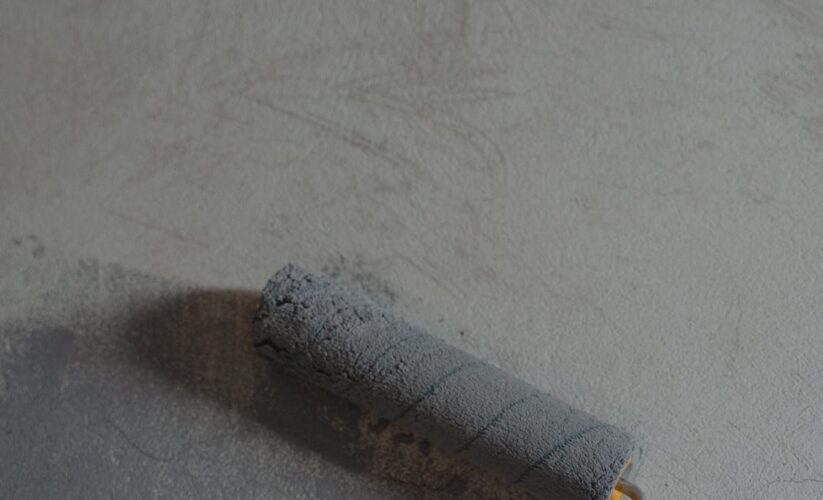
5 Essential Tips for Installing Epoxy Floors Like a Pro
The first step in installing epoxy floors is preparing the concrete surface for the coating. This includes sanding and optional etching. After the floor has been sanded and cleaned, it’s important to let it dry completely.
1. Prepare the Substrate
A successful epoxy floor installation is dependent on a sound foundation. This begins with the preparation of the substrate, and includes making repairs, grinding away previous floor coatings and cleaning the concrete surface thoroughly. Moisture testing is also a critical part of this process, as epoxy coatings cannot bond properly with a damp surface.
Once the floor is properly prepared, the next step is to apply the epoxy primer. This step creates a strong chemical bond with the concrete surface and helps to ensure that the epoxy will adhere well throughout its lifespan.
During this stage, it is important to work quickly. Most epoxy products have a limited working time known as their “bucket life.” To avoid missing this window, it is a good idea to work in small sections, and use a brush or roller pad that is specifically designed for epoxies.
After the primer has dried, it is time to start applying the main coat. This layer is critical to the durability and quality of your floor, and it is important to follow the manufacturer’s instructions for each product. For example, some epoxy products require the addition of a hardener to achieve a proper mix.
Be sure to apply the epoxy evenly, and pay special attention to corners and edges. This will help to avoid air bubbles and other imperfections that can weaken the epoxy. Once the main coat has been applied, it is important to let it dry completely before using the floor again. This can take a day or longer, depending on the weather and humidity conditions. Be sure to keep doors and windows open, if possible, to allow for proper ventilation.
2. Mix the Epoxy
When applying an epoxy floor, it is essential that the process is done correctly in order to achieve a high-quality, durable finish. There are a few key steps to follow to ensure this, including priming the concrete, filling in cracks, and applying the final top coat.
Primer is a crucial step in the flooring installation process and should never be skipped. It provides a strong chemical bond between the floor and epoxy resin, which helps to create a stronger and more resilient finished product. It also helps to protect the concrete from any chemicals or solvents that may be used in the flooring application process, which could weaken the epoxy resin.
Once the primer has been applied and dried, it is time to begin applying the actual epoxy floor coating. Be sure to read the instructions carefully for the particular epoxy you are using, as each will have specific mixing ratios and requirements. It is important that the mixture is properly mixed in order to ensure a proper curing of the product.
When laying the epoxy, it is best to work in small sections at a time, as the material will set relatively quickly once it is applied. It is also important to use a roller with a medium nap in order to ensure that the epoxy is evenly distributed across the surface. After the first coat has been rolled on, it is important to banish any bubbles that have formed by using a foam roller or brush.
Finally, it is a good idea to take the time to fill any cracks or holes in the concrete with an epoxy crack filler, as this will help to ensure that the finished floor is smooth and even. Once the final top coat has been applied, it is important to allow it to cure before walking on the floor or using any heavy equipment.
3. Apply the Epoxy
Most epoxy is resin-based and comes in two parts that must be mixed together before application. The hardening process of the epoxy is accelerated by heating the mixture.
This process creates a strong, non-porous coating that is resistant to damage from shock, water, and other chemicals. Epoxy flooring will also prevent cracking and distortion of the concrete underneath. It is extremely durable and lasts longer than tile, wood, and carpet flooring.
In addition to being highly durable, epoxy is also easy to clean and maintain. The smooth surface of an epoxy floor repels dirt and moisture, making it simple to wipe down and keep clean. This is especially helpful in areas that see a lot of foot or vehicle traffic.
Epoxy can even be made slip-resistant by adding aggregate to the mixture, which helps to prevent accidents and injuries. This extra grip is also useful if the area is prone to flooding or spills.

Aside from being a great option for commercial and industrial spaces, epoxy flooring is an affordable choice. Unlike other flooring materials, epoxy floors do not require removal of existing tiles, carpets, or wood, which can be expensive and time-consuming.
In addition, an epoxy coating can be applied to a concrete slab without requiring the need for additional floor preparation. This significantly cuts down on the overall costs of installation. This allows businesses and industries to revamp their flooring quickly without having to shut down operations or halt production. Epoxy is also incredibly cost-effective to repair should it ever get damaged. The sheen of an epoxy floor can also boost lighting by up to 300 per cent, which reduces the need for extra lighting in large facilities, further saving on energy costs.
4. Allow the Epoxy to Dry
Epoxy is a tough and durable floor coating that can elevate the look of any garage, workshop, or other room. However, it’s important to follow the proper steps when installing epoxy floors. If you want your new floors to last, it’s essential that the epoxy is cured and dried properly. The right curing and drying times unlock the full potential of epoxy floors, including durability, chemical resistance, and adhesion.
When applying epoxy, you’ll need to ensure the concrete slab is completely clean and free of any contaminants. This means cleaning the surface with a degreaser, sanding it with 180-grit sandpaper (or more coarse if necessary), and vacuuming up any remaining debris. This will help ensure a smooth, even finish and protect the floor from moisture damage.
It’s also a good idea to apply a primer before you start rolling on the epoxy. This will help the coating adhere to the concrete, and it will also prevent any air bubbles from forming in the final coat.
Once the primer has dried, you can begin applying the epoxy to the concrete slab. It’s a good idea to work in small sections at a time, and it’s helpful to use a notched trowel to spread the epoxy evenly.
It’s also important to allow the epoxy to dry completely between each coat. This will ensure that the layers bond together and provide a strong, long-lasting floor. In addition, if you have cracks or holes in your floor, be sure to patch them up with concrete filler and let it dry before applying the next coat of epoxy. Finally, if you’d like to add a decorative element to your floor, consider adding color flakes into the epoxy coating.
5. Apply the Top Coat
Epoxy floors have become a popular flooring solution for homeowners due to their durability and long-lasting nature. This type of floor is applied to concrete floors as an impenetrable, non-porous seal that protects the surface and prevents moisture damage. It is also easy to clean, making it an ideal choice for areas that may experience spills or flooding, such as garages and workshops.
Epoxies come in a wide variety of colors and effects, so you can create the perfect look for your space. For example, you can choose to add a decorative aggregate to your epoxy, which will give the floor a unique appearance and increase its durability. By selecting the right color and finish, businesses and homeowners can achieve a modern look with their epoxy floors, making them an attractive and durable choice for any space. Alternatively, you can opt for a self-leveling epoxy, which will smooth out any cracks or uneven surfaces and provide a seamless finish.
Another great benefit of epoxy is that it is water-resistant, which makes it ideal for places that may experience flooding or leaks. It is also resistant to chemicals, which means that it can be used in spaces where oil or other toxins may be spilled. This is particularly helpful for commercial spaces, as it can help to reduce the risk of contamination and keep the area safe for employees and visitors.
While epoxy floors are durable and easy to maintain, they are not without their drawbacks. For one, they can be quite smelly during the installation process. Additionally, they can be sensitive to moisture and may not hold up to heavy foot traffic for very long. However, these issues can be easily resolved by choosing a quality installer and following the proper installation guidelines. These tips will ensure that your epoxy floor is installed correctly and lasts for years to come.





